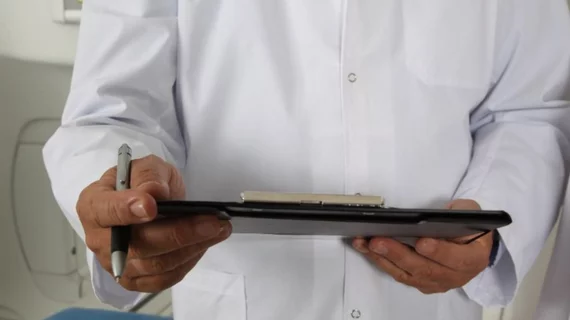Radiologists' on-call workloads have more than doubled relative to ED visits
Over the past seven years, radiologists' on-call workloads have more than doubled in proportion to the increase in emergency department visits, according to a new analysis.
The study, published in the European Journal of Radiology, compared the spike in radiologists’ on-call workloads to the steady increase in patient volume seen in emergency departments during the same period.
Previous research has demonstrated an imbalance in work that has disproportionately affected radiologists, with some revealing that while ED visits have increased by around 30% over recent decades, emergency CT requisitions have ballooned by up to 330%. The experts caution that this could lead to costly medical errors.
“Studies show that emergency radiology reports during on-call hours may be particularly prone to diagnostic errors in the face of increased workload due to relative staff shortage, absence of on-site senior radiologists and higher error rate during the night hours compared to day hours,” corresponding author, Christine Dan Lantsman, with the Department of Diagnostic Imaging at Sheba Medical Center, in Israel, and co-authors explained.
The experts centered their research around CT orders that were made during on call hours (3 p.m.-8 a.m., and weekends) at their institution between 2012-2019. They converted those numbers into relative value units (RVUs) and then compared them to their ED visit numbers.
Institutional ED visits rose by 23% during this period, compared to an overall increase in CT orders of 52%. CT scans of the brain, abdomen and spine all saw dramatic rises as well.
The experts noted that although these increases can be explained by a number of reasons—rising incorporation of imaging within trauma protocols, increased public awareness of serious acute health conditions and nonadherence to evidence-based guidelines when ordering imaging, etc.—the more pressing issue is how departments can cope with the growing influx of responsibilities radiologists are taking on.
“Radiologists, radiographers and on-call ED workforce should be adjusted to the significant changes in imaging volume and complexity to ensure quality and safety of patient care, and to avoid burnout,” the experts suggested. “Several strategies should be implemented to ensure the optimal patient care quality.”
You can view the detailed research in the European Journal of Radiology.
Related Radiology RVU content:
VIDEO: The importance of the Physician Practice Information Survey and its impact on radiology reimbursements — Interview with Linda Wilgus, former RBMA president
New metric captures radiologists’ true reporting time for complex cases, potentially enhancing RVUs
Radiology should consider ditching RVUs for a time-based productivity metric, study suggests
Dashboards Offer an Odometer of Practice Performance
RVUs vs. TVUs: Are Time Value Units a Fairer Way to Measure Productivity?

